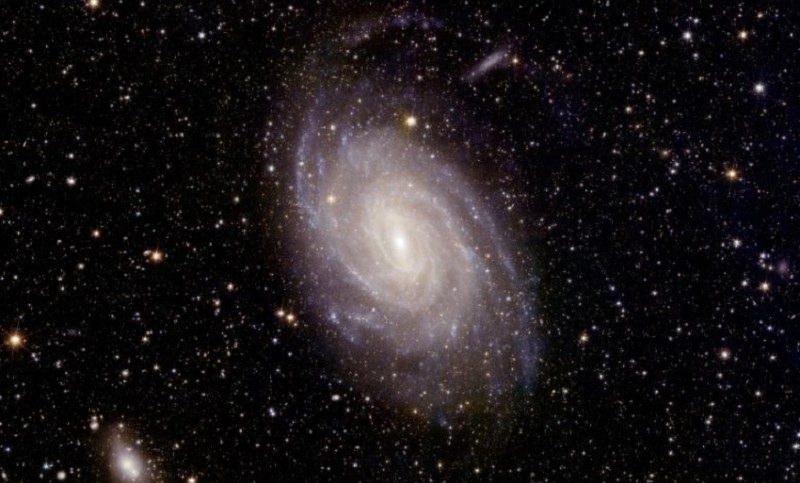
The Euclid mission, spearheaded by the European Space Agency (ESA) with support from NASA, has unveiled five new images that highlight the space telescope's prowess in probing two major cosmic enigmas: dark matter and dark energy. Dark matter, an elusive substance five times more abundant than regular matter, remains a mystery in terms of its composition. Dark energy, on the other hand, is the force driving the universe's accelerating expansion.
By 2030, Euclid aims to create a detailed cosmic map covering nearly a third of the sky. This map will have a broader field of view compared to NASA's Hubble and James Webb space telescopes, which focus on smaller regions with greater detail. This extensive map will allow scientists to pinpoint dark matter with unprecedented accuracy and study the evolving strength of dark energy over time.
The newly released images range in scale from a star-forming region in the Milky Way to clusters containing hundreds of galaxies. These images were captured shortly after Euclid's launch in July 2023 as part of its early observation program. Last year, the mission shared five preliminary images as a preview of Euclid's capabilities, prior to data analysis by scientists.
These new images, along with related scientific papers and data, are accessible on the Euclid website. A pre-recorded presentation by ESA about these discoveries can be viewed on ESA TV and YouTube.
NASA's upcoming Nancy Grace Roman Space Telescope will utilize Euclid's findings to enhance its own research on dark energy. Roman's superior sensitivity and resolution will enable the study of fainter and more distant galaxies, building on Euclid's groundwork.
One striking image of the galaxy cluster Abell 2390, located 2.7 billion light-years away, showcases over 50,000 galaxies. Near the image's center, some galaxies appear distorted, a phenomenon known as strong gravitational lensing, which helps detect dark matter.
Euclid aids in dark matter research by observing how it bends light from distant galaxies. In the Abell 2390 cluster, the massive presence of dark matter causes space to curve, bending the light from farther galaxies. This bending can produce arcs or rings, creating multiple images of the same galaxy through strong gravitational lensing.
For studying dark energy, scientists focus on weak gravitational lensing, a subtler effect requiring detailed computer analysis. This effect reveals smaller clumps of dark matter, allowing researchers to map and track their evolution over time, thereby understanding how dark energy influences dark matter distribution.
"Dark energy's subtle effects necessitate large surveys for more data and better statistical precision," said Mike Seiffert, NASA's Euclid project scientist at the Jet Propulsion Laboratory. "We can't just zoom in on one galaxy; we need to survey vast areas to detect these effects. Euclid is designed for this task."
Euclid employs two instruments to capture different wavelengths of light: the visible-light imager (VIS) and the near-infrared spectrometer and photometer (NISP). Foreground galaxies emit more visible light, while background galaxies shine brighter in infrared.
Jason Rhodes, JPL's principal investigator for NASA's Euclid dark energy science team, explained, "Euclid’s broad range of distances captured in visible and infrared wavelengths allows for deep, wide, high-resolution images hundreds of times faster than other telescopes."
Euclid's wide field of view includes entire galaxies, like NGC 6744, revealing key star formation areas. Understanding star formation is crucial to learning how galaxies grow and evolve.
Beyond its primary focus on dark matter and dark energy, Euclid has diverse astronomical applications. Its vast sky map can discover faint objects and monitor cosmic changes, such as varying star brightness. Recent findings include free-floating planets and newly identified brown dwarfs, which form like stars but lack sufficient mass for fusion.
"The new data, images, and scientific papers from Euclid mark the start of its scientific journey," said Seiffert. "The mission's wide view has already yielded significant results, from individual planets and Milky Way features to the large-scale structure of the universe. Keeping up with these developments is both exciting and challenging."
America to Send Indian Astronaut to International Space Station by Year-End: US Envoy
Florida Sees Biggest Solar Flare in Nearly 2 Decades: Sun's Fury Captured Amidst Solar Cycle Peak
Chennai Residents Catch Glimpse of International Space Station, Don't Miss Out!